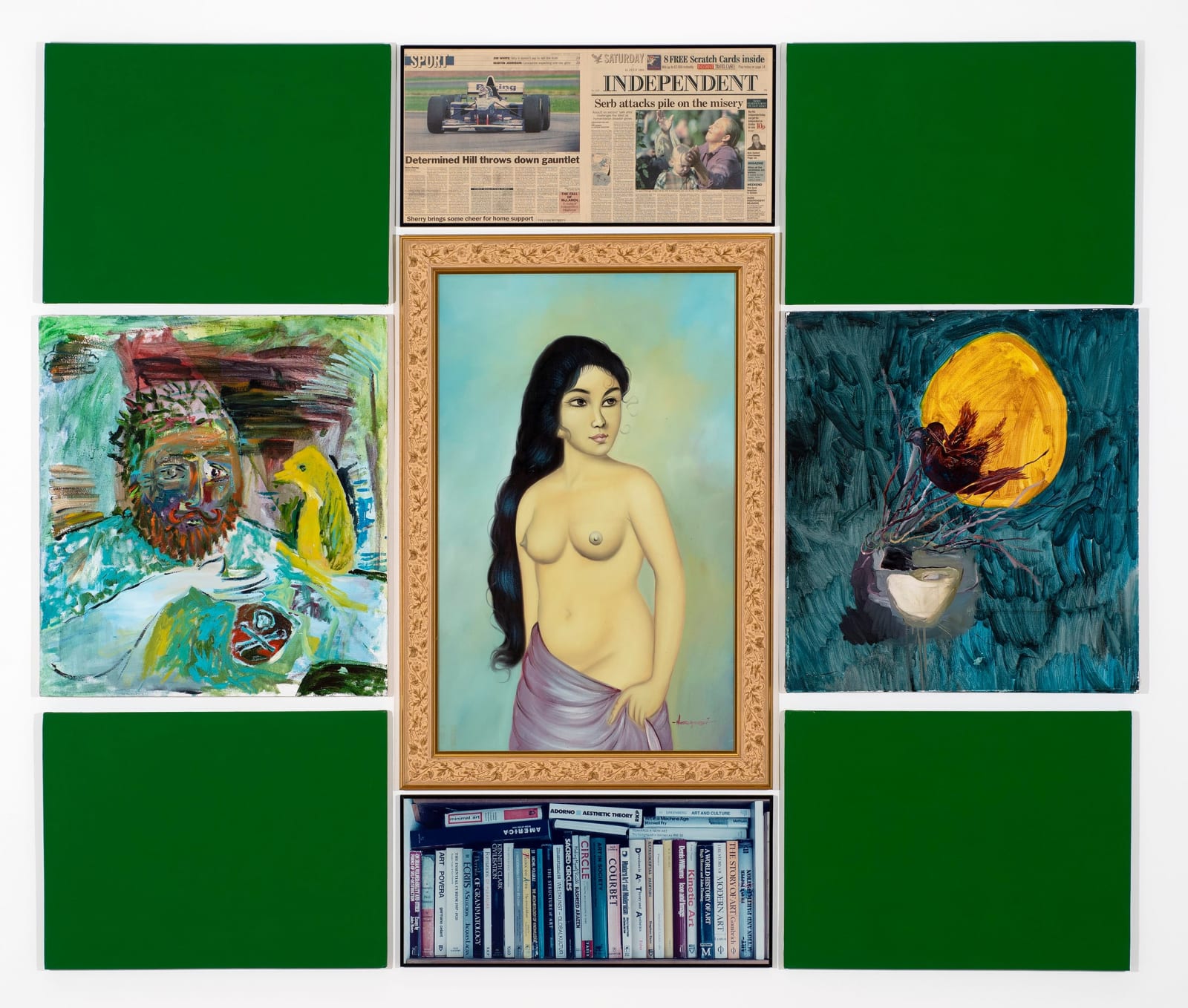Rasheed Araeen
Les Condition Postmodern (Anything Goes in Post Modernity) , 1996
Photographs, acrylic paint on plywood panels
182.9 x 198.1 cm
72 x 78 in
72 x 78 in
From the mid-1980s to the early 1990 – in the context of the ebbing of Third World struggle, the end of the Cold War, the consolidation of a restructured capitalism,...
From the mid-1980s to the early 1990 – in the context of the ebbing of Third World struggle, the end of the Cold War, the consolidation of a restructured capitalism, and a new round of imperialist wars – Araeen made a series of artworks that have since been dubbed his ‘cruciform’ works.
Araeen has emphasized procedure in the making of his subsequent ‘cruciform’ works, which he describes as a process of ‘cutting’ and ‘rupturing’ a green-coloured monochrome. Making a horizontal and vertical cut through the middle of the monochrome in the shape of a cross, Araeen would then separate out the four sections and ‘fill’ the cross-shaped cavity with a range of material he considered ‘incongruent to the purity of Minimalism.’ If Lucio Fontana signals the limits of Western modernist painting, rendering material the historical and ideological nature of the medium – albeit negatively, through slashes and perforations – in his ‘cruciform’ works, Araeen uses the same destructive procedure to indicate the limits of Western modernity itself, pointing at the global structures on which it was founded: colonialism, imperialism, and their attendant mechanisms of abjection. While Fontana’s act belongs to the era of high modernism, before the crumbling of Western colonialism had really begun, Araeen’s embodies disillusionment with both Western modernism and with the outcomes of Third World struggle.
Araeen has emphasized procedure in the making of his subsequent ‘cruciform’ works, which he describes as a process of ‘cutting’ and ‘rupturing’ a green-coloured monochrome. Making a horizontal and vertical cut through the middle of the monochrome in the shape of a cross, Araeen would then separate out the four sections and ‘fill’ the cross-shaped cavity with a range of material he considered ‘incongruent to the purity of Minimalism.’ If Lucio Fontana signals the limits of Western modernist painting, rendering material the historical and ideological nature of the medium – albeit negatively, through slashes and perforations – in his ‘cruciform’ works, Araeen uses the same destructive procedure to indicate the limits of Western modernity itself, pointing at the global structures on which it was founded: colonialism, imperialism, and their attendant mechanisms of abjection. While Fontana’s act belongs to the era of high modernism, before the crumbling of Western colonialism had really begun, Araeen’s embodies disillusionment with both Western modernism and with the outcomes of Third World struggle.
Exhibitions
Aicon Gallery, New York, Rasheed Araeen - Cruciforms 1987-96 (online exhibition), October 10 - November 19, 2022,Grosvenor Gallery, London, Rasheed Araeen, Sixty-Three Years of the Figural, held at Frieze, No. 9 Cork Street, 29 June - 15 July 2023
Join Our Mailing List
* denotes required fields
We will process the personal data you have supplied to communicate with you in accordance with our Privacy Policy. You can unsubscribe or change your preferences at any time by clicking the link in our emails.



